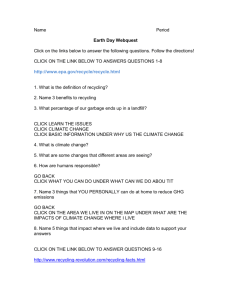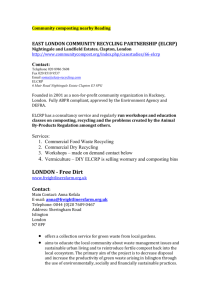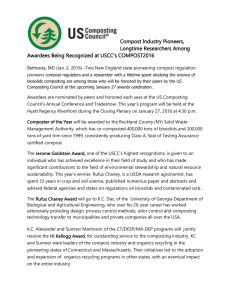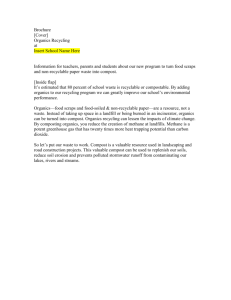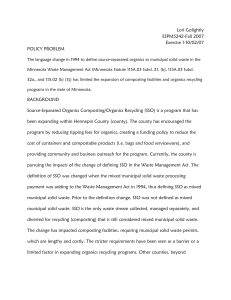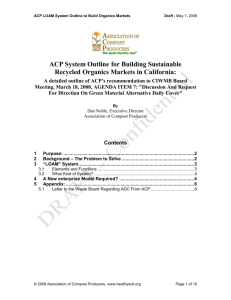Exercise_2_updated
advertisement
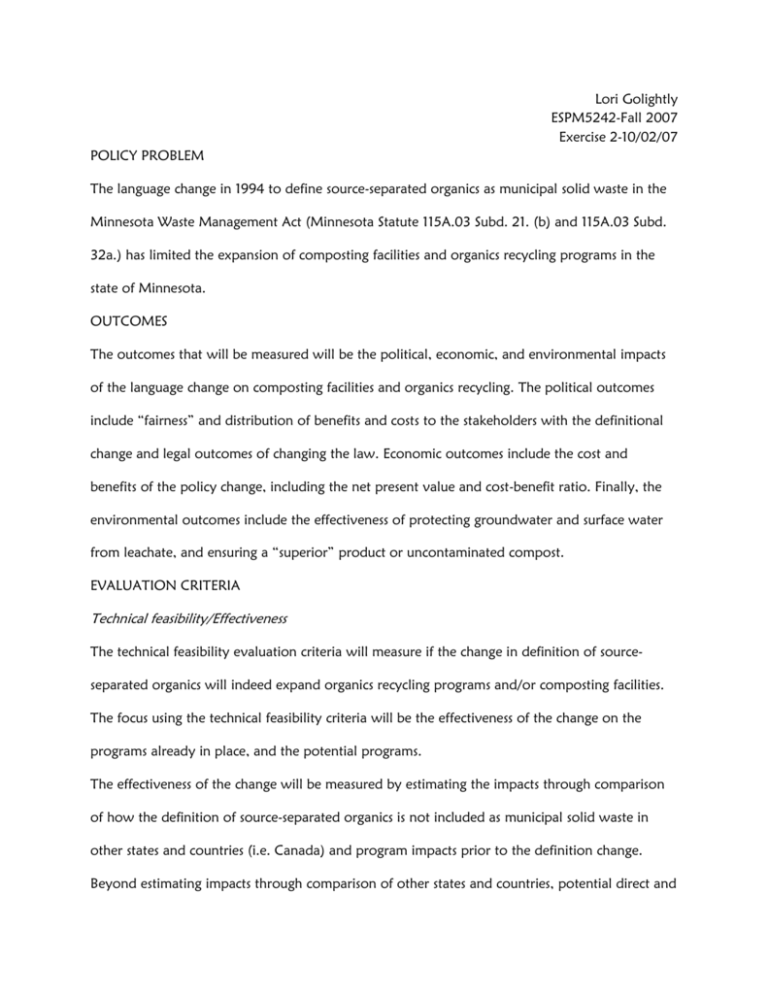
Lori Golightly ESPM5242-Fall 2007 Exercise 2-10/02/07 POLICY PROBLEM The language change in 1994 to define source-separated organics as municipal solid waste in the Minnesota Waste Management Act (Minnesota Statute 115A.03 Subd. 21. (b) and 115A.03 Subd. 32a.) has limited the expansion of composting facilities and organics recycling programs in the state of Minnesota. OUTCOMES The outcomes that will be measured will be the political, economic, and environmental impacts of the language change on composting facilities and organics recycling. The political outcomes include “fairness” and distribution of benefits and costs to the stakeholders with the definitional change and legal outcomes of changing the law. Economic outcomes include the cost and benefits of the policy change, including the net present value and cost-benefit ratio. Finally, the environmental outcomes include the effectiveness of protecting groundwater and surface water from leachate, and ensuring a “superior” product or uncontaminated compost. EVALUATION CRITERIA Technical feasibility/Effectiveness The technical feasibility evaluation criteria will measure if the change in definition of sourceseparated organics will indeed expand organics recycling programs and/or composting facilities. The focus using the technical feasibility criteria will be the effectiveness of the change on the programs already in place, and the potential programs. The effectiveness of the change will be measured by estimating the impacts through comparison of how the definition of source-separated organics is not included as municipal solid waste in other states and countries (i.e. Canada) and program impacts prior to the definition change. Beyond estimating impacts through comparison of other states and countries, potential direct and indirect impacts will need to be considered. An example of a direct impact of the definition change could be increased composting facility. An example of an indirect impact could be the increase of environmental damage through improperly run compost facilities (leachate draining into ground water or surface water, contamination of compost). These impacts will be measured by developing a standard of what is or is not acceptable environmentally and economically. To determine acceptable environmental standards, comparison past and present standards will be used. The metric to understand the effectiveness of the definition change would be a success metric, using success or failures from other comparable programs or prior developed best management practices. To determine acceptable economic standards, net present value and benefit-cost ratio will be utilized. Political viability The second evaluation criterion intended to be used in the analysis is political viability. This criterion will be used to indicate the alternatives with the least political opposition. As there has been a change in the political environment around solid waste and source-separated material, it is important to include this criterion. Constraints and feasibility of implementing the change will be considered as part of this criterion. In order to measure political viability, a metric of determining if whether policy makers will accept the outcomes will be developed. The metric would contain surveys and interviews of policy makers in the Minnesota legislature as well as State and various counties’ employees directly involved in solid waste decisions. Another metric for measuring political viability would be the mission effectiveness of the state’s solid waste plan or state county’s solid waste plans. Currently, the state has a waste management hierarchy, and recycling is set up as higher on the hierarchy than waste disposal. This metric would be designed to determine if the current definition and future definition would meet the mission or goals of the solid waste plan for the Golightly Page 2 state in increasing recycling and composting and decreasing landfilling and other waste disposal methods. Equity The third evaluation criterion to be used is equity. Determining the effect of policy change could have potential redistribution effects on relevant groups. Using the equity criteria will aid in determining how the benefits or costs of the policy change are distributed, and the level of “fairness” of the distribution. The first metric to use in determining equity is whether the net effect of the definition/policy change costs and benefits are zero for the affected populations (i.e. waste haulers, businesses, compost facilities, recycling facilities, waste-to-animal haulers). Though equity is subjective, a baseline must be determined in the area of organics recycling. The current amount of material that is being composting could be one base line and another base line (through past waste sorts) is the amount of waste that could be diverted. These baselines could be determined by using the various stakeholders to achieve these baselines, as well as past waste sort reports. These baselines will aid in determining if the change in definition will favor one stakeholder over another. The baseline could also be determined through the amount of materials each stakeholders’ facilities could physically handle and how much room the facilities had for expansion, as well as the amount of material available in the state. Finally, the metric could also determine if a stakeholder has been more or less favorably treated than another stakeholder. Legal The legal criterion is naturally part of this specific policy analysis, as the policy problem is centered a round an existing state law. As part of the evaluation and alternative process, investigation of the current law will be considered, as well as the political difficulties in changing the law. The metric to determine the legal possibility is comparing past and present laws in the state of Minnesota, and include national laws with composting facility requirements. Golightly Page 3
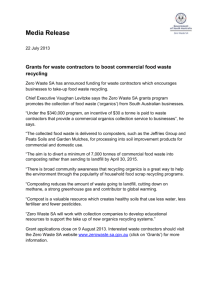
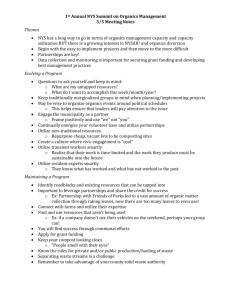
![School [recycling, compost, or waste reduction] case study](http://s3.studylib.net/store/data/005898792_1-08f8f34cac7a57869e865e0c3646f10a-300x300.png)
